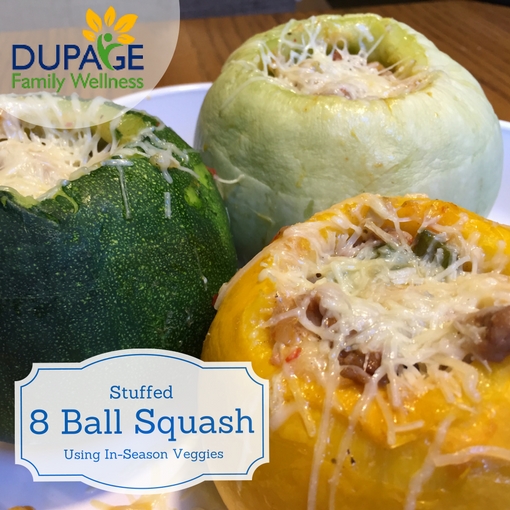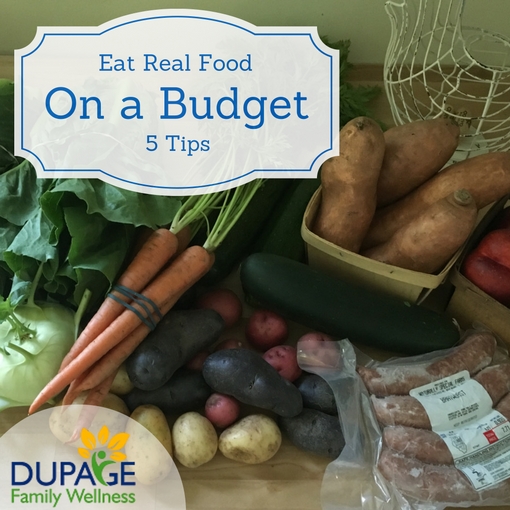
This delicious fruit cobbler has been my go to dessert this summer. It is gluten free, grain free, nut free, and delicious! I love its versatility and have made it with berries, peaches, and apples so far. I also love that it contains only a small amount of honey and is mainly sweetened by the roasted fruit.
This cobbler contains my new favorite grain free baking flour – Otto’s Cassava Flour! I heard a buzz about Otto’s, but it seemed expensive. What does a foodie on a budget do? Ask for it for your birthday to try it out! I was not disappointed!
What is Cassava Flour?
Cassava flour comes from the peeled and baked yuca plant root. The fiber and starch properties of this plant make cassava flour act similar to whole wheat flour in recipes.
Why Use Cassava Flour?
I prefer Cassava flour over whole wheat flour because it contains the additional fiber and nutrients from the yuca plant that are not contained in whole wheat flour. Whole wheat flour is mostly starch, and lacks nutrient density.
Today, most standard wheat flours have been treated and processed in undesirable ways making them often unrecognizable by the body and difficult to digest. Otto’s Cassava Flour is made from a clean, unadulterated source of yuca plants, making it more healthful and easier for the body to digest.
Cassava flour is popular because it can be substituted 1:1 for the regular flour in recipes. I’ve also made chocolate chip cookies and tortillas that you would never know were grain free and gluten free. Almond and coconut flour have different properties, and cannot be subbed 1:1 in traditional recipes.
Although I highly recommend cassava flour for the occasional grain free, sweet treat, it is still something to avoid as an every day part of your diet, as discussed in the previous article on moderation.
Otto's Cassava Flour is the only brand that I have researched and tried, therefore I recommend it. There are other cassava flours out there that may also work well but, but I do not have experience with them.
Grain Free Fruit Cobbler Recipe
Cobbler Filling Ingredients:
- Fruit of choice (6-8 peaches or apples, 3-4 cups of berries)
- 2 tsp of Otto’s Cassava Flour
- 1 tsp lemon juice
- ½ tsp Cinnamon (optional)
- 2 tbsp honey (optional – I usually omit and just enjoy the sweetness from the fruit)
Cobbler Topping Ingredients:
- 1 cup Otto’s Cassava Flour
- ½ tsp baking soda
- ½ tsp salt
- 1/3 cup cold butter (coconut oil or lard work also)
- 1/3 cup water
- 2 tbsp honey
- ½ tsp cinnamon (optional)
Directions:
Preheat oven to 425 degrees
- Make the filling: Mix fruit, 2 tsp of cassava flour, lemon juice and cinnamon and honey if desired in a large bowl until coated. Pour into an 8x8 glass baking dish and place in preheated oven for 10 minutes.
- While fruit filling is cooking make the topping. Mix 1 cup of cassava flour, baking soda, salt and ½ tsp of cinnamon. Using a fork, cut in the butter. Add water and 2 tbsp of honey. Mix until a dough comes together.
- Putting on the filling: Drop small spoonfuls of cobbler topping over the pan evenly. Bake for an additional 15-20 minutes until topping begins to turn golden.
Enjoy!
-Joelle Kurczodyna, NTP
 When I was studying nutrition in college, one of my professors always told us “everything in moderation.” I clung to this well known saying and used it to excuse my occasional (but really more like daily) consumption of sweets and treats. I have since come to believe that this is not the best advice.
When I was studying nutrition in college, one of my professors always told us “everything in moderation.” I clung to this well known saying and used it to excuse my occasional (but really more like daily) consumption of sweets and treats. I have since come to believe that this is not the best advice.
What is Moderation?
Moderation: the avoidance of extremes or excesses
The first problem is that it's there are no "rules" to know what moderation means. Who decides what is extreme or excess? There was a recent study to delve into this concept more. Researchers found that not only was everyone's definition of moderation different, but the more people liked a certain food, the more they considered moderate. They almost always set their definition of what was moderate above the amount that they ate- therefore passing off their own behavior as being moderate.
I really like ice cream- so in my mind when I used to have a bowl of ice cream everyday- I was still under the threshold of eating it "in moderation."
You may have problems even if you can avoid excess.
Several years ago, Dr. Jamie told me this analogy, which has resonated with me. Think about this:
When you are born, you have a cup. Each person’s cup is unique, some very small and others, quite large (based on your genes). The cup represents how much junk (stress, toxins, sugar, etc) that your body can handle before showing external signs of break down. For those with smaller cups, you may notice symptoms beginning from a young age ranging in severity from headaches or digestive issues to more serious chronic disease. For those with larger cups, you may be able to go a long time in life before experiencing any negative side effects from your diet and lifestyle choices.
Although this analogy is simplistic, it illustrates why you may not remain healthy if you consume “everything in moderation” forever.
Once your cup overflows, “everything in moderation” is not good advice. At this point, your body is trying desperately to fix itself, while giving you warning signals that something is not right. If you ignore these signals, every little bit causes more damage to your body. When this happens, taking drastic measures for a time will allow your body to heal, remove the warning signs, and restore health.
I often hear people say, “But I’ve done that my whole life” in regards to eating a certain diet or some other lifestyle habit. This leads to the belief that the diet or lifestyle choice could not possibly be tied to whatever negative symptom they are experiencing. Unfortunately or fortunately, your body works hard to keep you healthy. You can abuse it for quite awhile, depending on the size of your cup, before the signs of damage begin to show. The poor choices we make "in moderation” lead to damaging consequences over time.
What advice would I give instead?
My advice would be to listen to your body. If you experience a negative health symptom, your body is trying to send you a message. Do not ignore these symptoms. Rather, dig deep and reach out to figure out the root cause of the symptom you’re experiencing. It just might be caused by the thing that you are "doing in moderation".
What kind of negative health symptoms could be caused by this "overflowing cup?"
The list is long, but here are a few: constipation, diarrhea, bloating, heart burn, joint pain, arthritis, acne, dry skin, allergies, poor blood sugar control, anxiety, depression, headaches, high cholesterol, asthma, fatigue, brain fog, and many more.
Many people have at least one of these symptoms and live with it thinking it is normal. They either think that there is nothing they can do, or that the only solution is to take medication. What most people don't realize is that diet and lifestyle changes could alleviate their symptoms altogether!
This week we have two challenges for you:
1. Think about what you are doing. Notice when you convince yourself that something is OK because it is "in moderation", when you know it's not a good thing. For many people (myself included), avoiding unhealthy foods altogether is easier then just eating a little.
2. Pay attention to your body. Are you ignoring symptoms? Do you assume your aches and pains or digestive symptoms are normal, or just something have to live with?
Do you have any questions or want to discuss this with us? Simply reply to this email, or head over to our facebook page and comment there!
- Joelle Kurczodyna NTP

Earlier this week, my mom shared a great new farmers market find with me: 8 ball squash! I had never seen them before. Stuffing hollowed vegetables with meat and other veggies is one of my favorite meals. Let's try it with 8 Ball squash!
Ingredients:
- 3 - 8 ball squashes - (if you can't find 8 ball squash, this recipe would work great with zucchini or yellow squash- just cut in half and hollow like a boat. No need to do the boiling for 10 minutes step if you are using a long squash, but start baking it in the oven while the filling is in the pan)
- 1 Onion (chopped)
- 1 Tomato (chopped)
- 1 Sweet Bell Pepper (chopped) (Or use hot peppers if you like it spicy)
- 2/3 pound Italian sausage (or substitute meat of your choice). I used a spicy sausage to give it some good flavor
- 1-2 cloves Garlic (minced)
- Salt and Pepper to taste
- Cheese of choice- 1/2 cup (optional)
- (Optional) Additional veggies (e.g. carrots, sweet potato, celery, mushrooms)
Directions:
- Cut off the top of the squash
- Place squash (cut side down) in about an inch of boiling water and let cook for 10 minutes
- While squash is cooking, brown sausage and saute veggies in a pan
- Hollow out squash. Separate seeds, and add flesh to filling mixture.
- Add half of cheese to filling mixture (optional)
- Spoon filling mixture into hollowed out squash
- Top with other half of cheese
- Bake in oven at 350 for 10 minutes or until cheese is melted
Green Peppers are the bumper crop of our garden this year. Later in the week, I made the same filling, and stuffed 5 peppers. I added a small zucchini and a small pablano pepper instead of the bell pepper. Great way to use some produce that is plentiful or produce that you need to use.
Keep in mind that this recipe is totally flexible! It isn't like baking where ratios are important. If there is a meat, veggie, or type of cheese that you like- use it! I bet it will turn out great! Let us know if you try it- and if you find an awesome combo let us know on Facebook!
Dr. Jamie Thomure

A few weeks ago, we published an article about living to 100. I wanted to emphasize the importance of community and relationships discussed in this article. It is obvious to most of us that eating healthy and moving our bodies is important, but most of us don’t think about how important meaningful relationships are to our health. Did you know that having strong social connections has been linked to motor skill retention, cancer survival, increased immune function, memory preservation, and longevity? Social isolation on the other hand has been linked to increased risk for heart disease and Alzheimer’s disease. Check out this article for links to the research studies on everything I just mentioned!
This week- I challenge you to work on your social wellness! We often get so stuck in our daily routines that we don’t take time to reach out to new people around us, or to deepen our relationships with friends and family.
Here are a few ideas for you to increase your social wellness this week:
1) Call an friend that you haven’t spoken to in a while just to say hi and see what is going on in their life
2) Start a weekly dinner with friends or family. Joelle told me recently that her and her husband are planning a Friday night dinner each week and inviting different friends over to join them.
3) When you are out and about, strike up a conversation with people around you. I know that it is easier to sink into the comfort of your smart phone, but you never know what sorts of interesting people you could meet!
4) Be more social, and use less social media! Ever seen a group of people out to dinner all sitting there staring at their phones? It happens all the time- try putting it away and connecting!
5) Join a group. If you are feeling like your social circle needs some beefing up- try joining something you are passionate about to meet like-minded people. This could be a church, a gardening club, a card group, a fitness class, a sports team, or a volunteer group.
6) Once you join a group- make sure you participate! So many people are “members” of various groups, but only go on occasion. You will form much deeper relationships by interacting with the group more often.
7) Meet someone for a walk! Not only will this get you moving, but if gives you a good opportunity to chat with someone!
So this week I challenge you to try one or two of the suggestions on the list to improve your “social wellness.” Remember, when it comes to relationships with those around us, it isn’t a contest to see who can have the most relationships, but rather how deep and meaningful those relationships are.
If you have more ideas on what you do to improve your social wellness, I’d love to hear them! Chat with us on our facebook page!
-Dr. Jamie Thomure

I have a confession to make. Four years ago, I was a couponer, and we ate the Standard American Diet (SAD) full of processed, convenience foods. I got home from the grocery store, proudly spread my purchases on the table, and made my husband guess how much I paid for everything. I could buy a table full of “food” for just a few dollars. I now understand that this "food" was not really food at all, but chemical fillers with few nutrients. The "food" was cheap, but when I think about the long term effect on our health, it was NOT really cheap.
When we switched to eating a real, whole food diet I was concerned about how much it would cost. As an extreme couponer, I got most processed foods for almost free, but there are few, if any, coupons for fruits, vegetables, or meat. If you are not an extreme couponer, processed, packaged foods are expensive.
When you switch to a real food diet, you will spend more produce and meat, but you will no longer need to buy the processed foods.
For example:
- Buy a bag of carrots rather than a bag of chips
- Buy a dozen eggs rather than a box of pop-tarts
You get more nutrients per dollar when you buy real food compared to processed food containing fillers and few nutrients.
We've been able to eat real food on a tight budget. To break it down, here is the monthly grocery budget for our family of two:
- $100 for meat from a CSA at Walnut Acres Farm. (They are wonderful people. If you sign up, tell them Joelle sent you!)
- $250 for everything else (fruit, veggies, and other staples). I take this money out as cash each month, so I know exactly how much I spend and do not exceed that amount.
For the month of July, I challenged myself to shop local. I shopped only at farmers markets and a small health food store within walking distance. Why? If you go back to reading the post "Should I Buy Organic Produce?". I realized that the absolute best option for our health is to buy locally and sustainably grown food. As an added bonus, this benefits the local community and the environment. It was not that difficult to shop local in July, and I plan to continue this challenge.
Now, back to the budget. With a little creativity, I can stick to my new shop local policy and stay within the budget. You can do this too! Here are a few tips to help you stretch your dollar:
- Buy what is plentiful and in season. Whether you are at the grocery store or a local farmer’s market, you will notice that there is an abundance of the items that are in-season, and the price of these goes down to sell them while they are fresh. These are the bulk of the items that I buy. In July, we ate a zucchini, a variety of greens, cabbage, onions, kohlrabi, broccoli, and cucumbers. Although, I mainly stuck with these less expensive, in-season foods, I supplemented them with a few more expensive items like berries, potatoes and carrots. The beauty of buying in-season is that as the weeks go by and the seasons change, the in-season foods are also constantly changing. Although we’ve been eating zucchini now, I know that that soon there will be an abundance of tomatoes and not long after that winter squash will be in season.
- Use all of what you buy. A great way to stretch your money is to eat the entire edible portion of what you buy, without letting any go to waste. For example, in our recent seasonal spotlight on beets, you will notice that the recipe included both the beets and the beet greens. Add items that you aren’t sure what to do with to a stir fry or soup. If it’s a vegetable try roasting it (see "Making Vegetables the Taste Good").
- Don’t be afraid to try new foods. Prior to this challenge, I shopped at Aldi. While there are a lot of things that I like about Aldi, I was stuck in a rut when it came to buying produce. Along with the idea of point #1, often the things that are cheaper may not be the things that we are used to buying or even think that we like. I’ve been pleasantly surprised when I tried radishes, rutabagas, kohlrabi, and a variety of greens this month.
- Buy in bulk when appropriate. Buying in bulk can save you money if the items freeze well. I specifically noticed this with berries. I could buy a very small container of blueberries for $3-$4 or I could buy the 5 lb box for $15. I opted for the 5 lb box and immediately portioned out what I thought we’d eat for the next few days and put the rest in the freezer. Now we are able to enjoy blueberries all month and a fraction of the price, I am actually snacking on some frozen blueberries and walnuts right now. Keep point #2 in mind and only buy and freeze items that you know you will eat, so the food does not go to waste.
- Get to know your farmer. One of the reasons that we did the shop local challenge was to connect with local people that grow the food that we eat. Once you build that relationship, you might be able to barter services for veggies, purchase the less pretty and therefore less desirable produce at a lower price, or buy leftover produce for less at the end of the day. Even without these advantages, I feel so much better knowing where my food comes from, and I am excited to directly support the people that are growing and raising my food.
I’d love to hear about tips and tricks that you have found to save money on your food bill! Connect with us on facebook.
Joelle Kurczodyna, NTP
@kfamilygoessustainable on Instagram



 When I was studying nutrition in college, one of my professors always told us “everything in moderation.” I clung to this well known saying and used it to excuse my occasional (but really more like daily) consumption of sweets and treats. I have since come to believe that this is not the best advice.
When I was studying nutrition in college, one of my professors always told us “everything in moderation.” I clung to this well known saying and used it to excuse my occasional (but really more like daily) consumption of sweets and treats. I have since come to believe that this is not the best advice.


